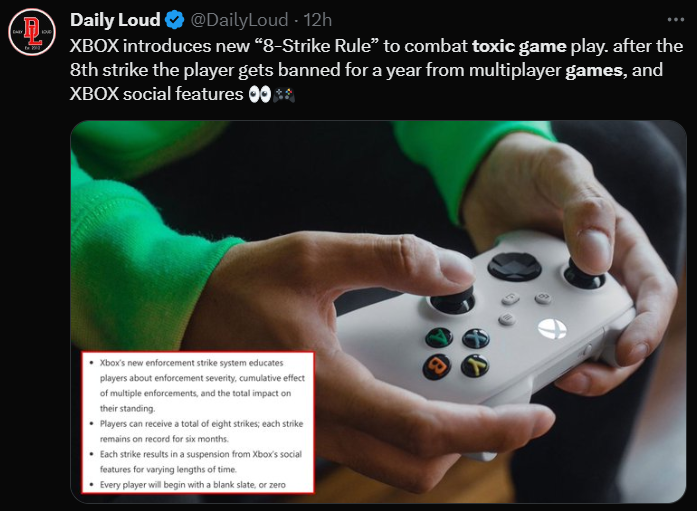Fed up with gaming negativity? Unity fights back with AI

- Unity’s “Safe Voice” uses AI to curb gaming toxicity and has broader applications.
- Inclusive gaming boosts profits; Safe Voice actively counters toxicity.
- “Safe Voice” could improve online civility beyond just gaming.
Online gaming has matured far beyond its original purpose as a mere diversion, evolving into intricate digital societies that echo our real world’s cultural and social diversity. The advent of cutting-edge AI solutions like “Safe Voice” from Unity further enriches these platforms. They’re not just places for fun and friendship but are also becoming arenas where technological advancements are deployed to confront persistent challenges such as online toxicity.
However, the utopian vision of harmonious online communities is yet to be fully realized. Factors like misbehavior and poor communication continue to mar the experience, affecting user satisfaction and the gaming platforms’ commercial viability. Research led by Dr. Rachel Kowert from Take This delves into the troubling correlation between a toxic gaming environment, players’ mental health, and a game’s financial success.
Dr. Kowert’s study underscores the urgent need for gaming companies to prioritize measures to combat toxicity. Her research, further substantiated by data analytics firm Nielsen, shows that games that successfully cultivate a positive community culture experience a 54% uptick in revenue. This contrasts with their counterparts which allow abusive behavior, and suffer both in player engagement and financial returns.
Unity presents “Safe Voice” – The AI and sound intelligence
For the continuously evolving landscape of online gaming, the need for safe and welcoming environments has never been more pressing. Unity’s innovative technology, Safe Voice, meets this demand head-on, which promises to be a game-changer in reshaping the online gaming atmosphere.
In an interview, Jeff Collins, the Senior VP of Engineering at Unity, shed light on how Safe Voice leverages machine learning, acoustic intelligence, and semantic interpretation to manage toxic elements in gaming interactions proactively.

Jeff Collins, SVP of Engineering, Operate Solutions, Unity, explains how AI is being used in its new innovation.
Collins explained that Safe Voice doesn’t just use basic speech recognition techniques. Instead, it takes advantage of complex machine learning algorithms to explore the deeper context of voice interactions, examining not only the words but also the emotions, tone, and even brief vocal expressions that come into play.
“Safe Voice kicks in when players flag instances of toxic or disruptive behaviors and developers can also proactively monitor activities in their game, like player mutes or abrupt exits,” he added.
The technology behind Safe Voice offers an advanced blend of machine learning with sound analytics and semantic interpretation, allowing it to move beyond mere voice transcription. By decoding subtle vocal nuances and providing context to spoken words, Safe Voice aims to make the virtual world more harmonious and less prone to misunderstandings.
Understanding acoustic and semantic intelligence
While the specific programming languages used for Safe Voice aren’t publicly disclosed, it’s reasonable to speculate that Unity’s preferred language, C#, features prominently. That said, considering the complex AI and natural language algorithms involved, Python—a language renowned for its capabilities in data science—may also contribute to the architecture, possibly integrated with machine learning libraries like TensorFlow or PyTorch.
Safe Voice’s real-time analysis further highlights the necessity for robust data management solutions, perhaps leveraging distributed computing techniques. This convergence of technologies underlines Unity’s forward-looking vision and exemplifies the exciting blend of gaming with cutting-edge computational frameworks.
For those new to the concepts of acoustic and semantic intelligence, these represent two distinct yet complementary dimensions of voice analysis. Acoustic intelligence digs into not just the words uttered, but also the non-lexical elements like intonation, volume, and unique vocal expressions such as laughter or sighs. For instance, it can identify the mood or emotion behind the words—whether the speaker sounds happy, irritated, sarcastic, or stressed.
Semantic intelligence, in contrast, dives into the nuanced understanding of language and its context. It goes beyond transcribing speech to grasp the true meaning, intent, and relevance of the words spoken. For instance, the term “bank” could imply a financial institution or a riverbank, and semantic intelligence would discern the intended meaning via the context in which it appears.

Deep dive into coding with Unity in creating Safe Voice. (Source – Shutterstock)
In the case of Safe Voice, the marriage of acoustic and semantic intelligence offers a holistic view of verbal interactions within games. Acoustic intelligence can flag emotionally-charged exchanges by analyzing voice tonality and volume, while semantic intelligence ensures that words or phrases are not misjudged when removed from their proper context. Together, they provide a multi-layered, nuanced analysis, enriched by Safe Voice’s in-depth reporting dashboards, which help teams better understand the dynamics of player interactions.
Navigating from detection to intervention with AI from Unity
Collins explained that the analytics dashboard provides a temporal view of trends, revealing the behavior most likely to disrupt gameplay. It offers developers an intricate examination of player attributes and activities, allowing them to label game sessions as either toxic or vulnerable, all while keeping tabs on player consent status.
“The monitoring dashboard is updated in near-real time and reflects their custom priorities so they can focus their efforts. With Safe Voice, moderators are empowered to make informed decisions promptly and efficiently, allowing them to mitigate situations before they have a chance to escalate,” he said.
The key to identifying harmful behavior in a gaming context lies in a multi-faceted approach. Toxicity is more than words—it manifests attitudes discernible through vocal aspects like volume, tone, pitch, and emotional expression. Collins noted that Safe Voice offers an advanced lens into player behavior by evaluating the underlying intent, a critical parameter for assessing the quality of interactions.
By constantly tracking various vocal characteristics, the AI system can spot patterns that align with particular in-game actions or states of player engagement. This real-time analysis enables game studios to manage toxicity dynamically.
As an outcome, Safe Voice contributes to a more friendly gaming space. It enables moderators to swiftly intervene when toxicity emerges and facilitates rewards for encouraging players. This deep understanding of community dynamics allows studios to both fine-tune their current offerings and shape future games to be more inherently secure.

Actions taken when toxicity is taken place in Xbox. (Source – X)
That leads to questions about the technology’s broader impact: what observable changes might players experience, and how might this reshape online gaming culture at large?
Upon deploying Safe Voice, players could witness a marked decline in harmful behavior within digital gaming spaces. Collins suggested that a cleaner, more respectful communication landscape could heighten feelings of safety and inclusion, thus promoting diverse participation and teamwork. This, in turn, could enrich the overall gaming experience, as players become more open to collaborative problem-solving and idea-sharing.
This shift in how players communicate could create ripple effects throughout the gaming world. Expectations for appropriate behavior could rise, catalyzing a larger cultural move towards greater empathy and respect.
“Our hope is to be a catalyst for transformation towards a less toxic and more engaging gaming culture, possibly inspiring developers to create games that further encourage positive interaction,” said Collins.
AI’s broader applications: Beyond Unity’s gaming domain
Given the transformative potential of this technology, its applications could easily be extended to realms beyond gaming—such as social media platforms and various online forums. Picture a digital landscape where Safe Voice-inspired tech is integrated into social networking sites, online discussions, and even professional collaborative tools.
Platforms like social media, notorious for heated debates and conflicts, could see substantial improvements through real-time oversight and regulation. An AI-based system could preemptively detect incendiary remarks or conversations, either steering the discourse back to a more respectful tone or stepping in when needed. The impact of such an approach could drastically diminish instances of cyberbullying, hate speech, and the spread of misinformation.
As AI continues to mature, its capacity to comprehend the complexities of human interaction becomes increasingly significant. Today, its role may be confined to identifying toxic elements in gaming environments, but tomorrow it could have myriad other uses—from assessing customer satisfaction in service industries to monitoring emotional well-being in telehealth settings, or even evaluating student engagement in online educational platforms.
For the time being, Unity remains committed to addressing the gaming sector, which is known to have a particularly pressing issue with toxicity, with considerable demand for solutions from both game developers and players.
Collins wrapped up by saying, “We’re very excited to offer a solution to help creators foster more positive gaming environments. We believe the benefits of Safe Voice can be applied to other areas beyond gaming as well, and it will be something we explore in the future.”











